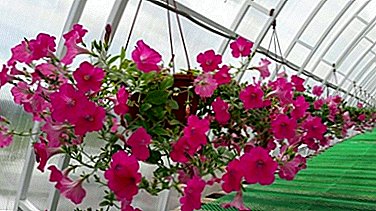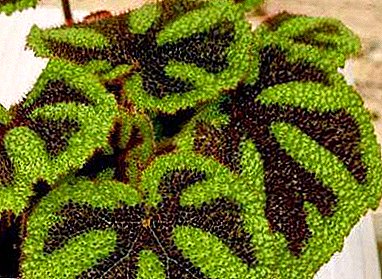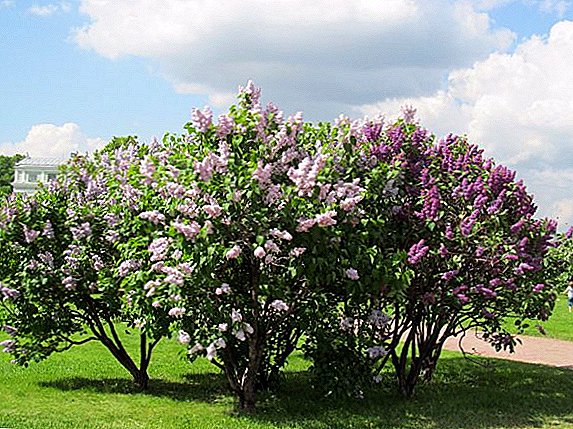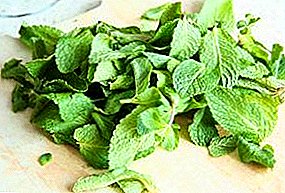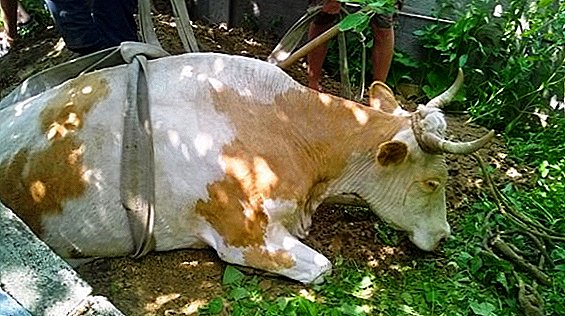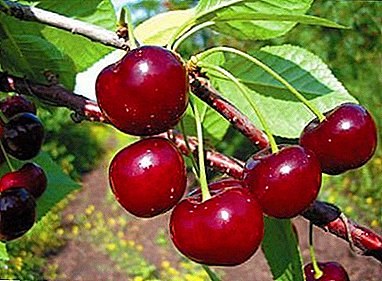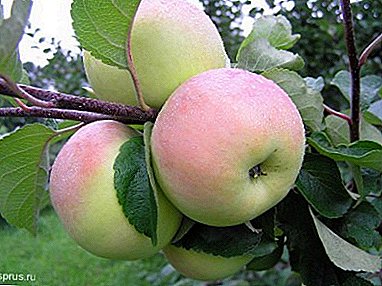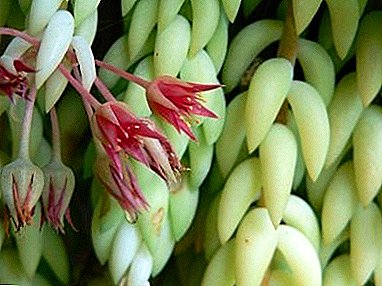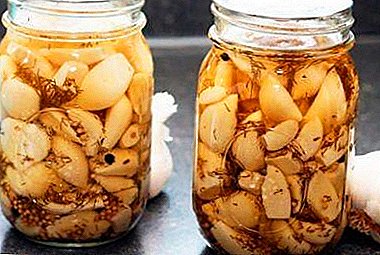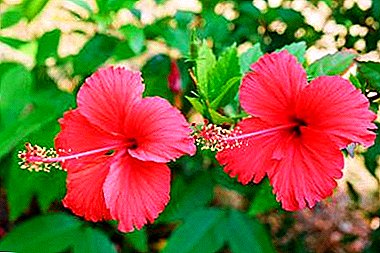
Hibiscus is considered one of the most beautiful shrubs. Its flowers are used as a decoration in wedding ceremonies, gourmets enjoy its taste.
However, not everyone knows that a flower grown on a windowsill is different from other types of hibiscus, and tea can only be made from a certain variety.
We will tell you more about what plants are used for making tea, which can be grown at home on a windowsill and which have properties similar to carcade.
This is the same or not, why do so many people think so?
It refers to herbal tea of bright red or burgundy color with a sweet-sour taste, made from dried petals of a Sudanese rose. And, precisely because Carcade tea made from hibiscusFor many, these two concepts are unambiguous.
What is the difference?
 Consider how they differ. So, hibiscus is a flowering plant that has many species, hibiscus is the name of the used part of the flower and tea made from the Hibiscus sabdariffa plant.
Consider how they differ. So, hibiscus is a flowering plant that has many species, hibiscus is the name of the used part of the flower and tea made from the Hibiscus sabdariffa plant.
In industrial plant growing it is most often called roselle. He may also be called Sudanese rose, red sorrel, rose Sharon, Rosella.
Hibiscus from different places of growth differs in taste and color, has a different ratio of nutrients. Consider what this plant is.
Botanical description, history of discovery, geography of habitat Hibiscus sabdariffa
Its homeland is Africa, more precisely, Egypt and Sudan, now it is grown in almost all tropical and subtropical countries of the world. People have long used karkade. More than once in the tombs, archaeologists have found this plant. In Egypt, it remains today a national drink. In Europe, they learned about the Sudanese rose in the 17th century, but tea was not particularly popular. It spread here not so long ago - at the end of the last century, when trips to African states became available.
Tea with hibiscus (in this case refers to the carcade) contains a large amount of fruit acids, biologically active substances, vitamins and minerals. Is he:
- regulates pressure;
- possesses antispasmodic and diuretic action;
- removes excess metabolic products from the body;
- has a choleretic effect;
- increases the protection of the liver against negative effects;
- speeds up metabolism;
- improves the general condition of the body.
We offer to watch a video about karkad tea and its benefits:
A photo
Further on the photo you can see how the plants look.



Which Hibiscus varieties have beneficial properties similar to Sudan rose?
Basically all hibiscus varieties are decorative. In total there are more than 250. Most often you can meet the following types of hibiscus:
- terry
- tree;
- Syrian;
- grassy.
The plant, which, like the Sudanese rose, is used in food, is edible Hibiscus - Hibiscus esculentus, or okra.
It is grown as a spicy vegetable crop in many southern countries. It grows up from 30-50 cm to 2 meters, has long fruits in the form of pyramidal pods.
Unripe 3-5 days fruits are eaten as seasonings in various cuisines of the world. From the ripened seeds make a drink that tastes like coffee. Like Sudan rose, okra contains a lot of fiber, oils, vitamins., trace elements. It contains a large amount of magnesium, calcium, manganese, iron, ascorbic acid.
Details on the types and varieties of hibiscus are discussed here, and the properties of the plant can be found in this article.
Is it possible to grow a Sudanese rose at home?
Grow karkade at home is possible. Sabdariff hibiscus is an annual plant that takes root well on fertile sandy soil. For the cultivation and reproduction of hibiscus you need a lot of bright light, so not in every country it can grow. The roots of this plant grow so fast that you need to constantly change the volume of the pot. Seedlings planted at the end of February are planted in a garden plot. The place should be for planting high enough so that there is no stagnation of water in the soil.
We offer to watch a video about the cultivation of Sudanese rose at home:
Care rules
Plant conditions should be close to tropical. Care for hibiscus includes the following points:
 Plentifully watered in the spring and summer, moderately in winter, do not overfill, to prevent rotting of the roots.
Plentifully watered in the spring and summer, moderately in winter, do not overfill, to prevent rotting of the roots.- The temperature should be without sharp fluctuations, in winter not lower than +12 degrees. With a sharp change in temperature, the flower drops buds, flowers, and even foliage. The plant should not be under the influence of drafts and direct sunlight.
- Spray the leaves, especially if the room is too dry and warm air.
- Loosen the topsoil.
- During growth and flowering feed organic and mineral fertilizers.
- Up to 5-6 years of age every year to replant in a new pot.
Transplantation should be carried out in the early spring to the ground, consisting of clay-sod, leaf and humus parts in the ratio 2: 1: 1, in which it is good to add a little sand and bird droppings. When transplanting part of the roots cut, which contributes to the growth of young shoots.
We offer to watch a video with tips on caring for a Sudanese rose:
Possible diseases and their treatment
The plant may be affected:
- Non-infectious chlorosis. It occurs due to the lack of nitrogen, iron, potassium, magnesium. Thinning branches of the plant, decreases the brightness of the color of the leaves, they turn yellow and fall off, there is no flowering.
- Infectious chlorosis. The reason - the defeat of viruses, fungi, bacteria. The leaves turn yellow, the plant weakens and fades.
- Sunburn. On hibiscus fall direct sunlight. White spots appear on the leaves.
To treat the plant is necessary taking into account the type of disease:
- In order to avoid non-infectious chlorosis, it is necessary to regularly feed with fertilizers, add iron chelate to the water, or spray the flower with it.
- Treatment with fungicides, timely transplantation, and avoidance of contact with diseased plants will relieve infectious chlorosis. Periodically, the flower should be washed under the shower.
- Among the pests of hibiscus: aphid, spider mite, greenhouse whitefly, chertzek, scytwick and false shield, gall midge, for which many drugs have been developed, also folk remedies are used. Among them, sprinkle with soapy water, mustard, dry red pepper.
Hibiscus responds well to treatment and quickly restores its appearance.
Read more about the diseases and pests of hibiscus described here.
- How and when does hibiscus bloom and how to care for it during flowering?
- Why is hibiscus called the “flower of death” and can it be kept at home?
Properly caring for a plant, you can constantly admire its healthy appearance, large and bright flowers, relax near beautiful shrubs and enjoy the taste and aroma of healing karkade tea brought from southern countries.


 Plentifully watered in the spring and summer, moderately in winter, do not overfill, to prevent rotting of the roots.
Plentifully watered in the spring and summer, moderately in winter, do not overfill, to prevent rotting of the roots.